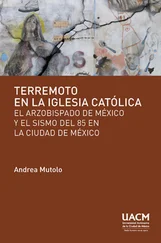Andrea Dworkin - Woman Hating - A Radical Look at Sexuality
Здесь есть возможность читать онлайн «Andrea Dworkin - Woman Hating - A Radical Look at Sexuality» весь текст электронной книги совершенно бесплатно (целиком полную версию без сокращений). В некоторых случаях можно слушать аудио, скачать через торрент в формате fb2 и присутствует краткое содержание. Жанр: Публицистика, на английском языке. Описание произведения, (предисловие) а так же отзывы посетителей доступны на портале библиотеки ЛибКат.
- Название:Woman Hating: A Radical Look at Sexuality
- Автор:
- Жанр:
- Год:неизвестен
- ISBN:нет данных
- Рейтинг книги:4 / 5. Голосов: 1
-
Избранное:Добавить в избранное
- Отзывы:
-
Ваша оценка:
- 80
- 1
- 2
- 3
- 4
- 5
Woman Hating: A Radical Look at Sexuality: краткое содержание, описание и аннотация
Предлагаем к чтению аннотацию, описание, краткое содержание или предисловие (зависит от того, что написал сам автор книги «Woman Hating: A Radical Look at Sexuality»). Если вы не нашли необходимую информацию о книге — напишите в комментариях, мы постараемся отыскать её.
Woman Hating: A Radical Look at Sexuality — читать онлайн бесплатно полную книгу (весь текст) целиком
Ниже представлен текст книги, разбитый по страницам. Система сохранения места последней прочитанной страницы, позволяет с удобством читать онлайн бесплатно книгу «Woman Hating: A Radical Look at Sexuality», без необходимости каждый раз заново искать на чём Вы остановились. Поставьте закладку, и сможете в любой момент перейти на страницу, на которой закончили чтение.
Интервал:
Закладка:
mouths, and the grass became bread, we
would still be sad. We live in a system that
manufactures sorrow, spilling it out of its
mill, the waters of sorrow, ocean, storm,
and we drown down, dead, too soon.
. . . uprising is the reversal of the system, and revolution is the turning of tides.
Julian Beck, The Life of the Theatre


The Revolution is not an event that takes
two or three days, in which there is shooting and hanging. It is a long drawn out
process in which new people are created,
capable of renovating society so that the
revolution does not replace one elite with
another, but so that the revolution creates
a new anti-authoritarian structure with
anti-authoritarian people who in their
turn re-organize the society so that it
becomes a non-alienated human society,
free from war, hunger, and exploitation.
Rudi Dutschke
March 7, 1968


You do not teach someone to count only
up to eight. You do not say nine and ten
and beyond do not exist. You give people
everything or they are not able to count at
all. There is a real revolution or none at
all.
Pericles Korovessis, in an interview
in Liberation , June 1973


I N T R O D U C T I O N
This book is an action, a political action where revolution is the goal. It has no other purpose. It is not cerebral wisdom, or academic horseshit, or ideas carved
in granite or destined for immortality. It is part o f a
process and its context is change. It is part o f a planetary movement to restructure community forms and human consciousness so that people have power over
their own lives, participate fully in community, live in
dignity and freedom.
T h e commitment to ending male dominance as the
fundamental psychological, political, and cultural reality o f earth-lived life is the fundamental revolutionary commitment. It is a commitment to transformation o f
the self and transformation o f the social reality on every
level. T h e core o f this book is an analysis o f sexism (that
system o f male dominance), what it is, how it operates
on us and in us. However, I do want to discuss briefly
two problems, tangential to that analysis, but still crucial
to the development o f revolutionary program and consciousness. T h e first is the nature o f the women’s movement as such, and the second has to do with the work o f the writer.
17


10
Woman Hating
Until the appearance of the brilliant anthology
Sisterhood Is Powerful and Kate Millett’s extraordinary
book Sexual Politics , women did not think o f themselves
as oppressed people. Most women, it must be admitted,
still do not. But the women’s movement as a radical
liberation movement in Amerika can be dated from the
appearance of those two books. We learn as we reclaim
our herstory that there was a feminist movement which
organized around the attainment of the vote for
women. We learn that those feminists were also ardent
abolitionists. Women “came out” as abolitionists —out
of the closets, kitchens, and bedrooms; into public
meetings, newspapers, and the streets. Two activist
heroes o f the abolitionist movement were Black women,
Sojourner Truth and Harriet Tubman, and they stand
as prototypal revolutionary models.
Those early Amerikan feminists thought that suffrage was the key to participation in Amerikan democracy and that, free and enfranchised, the former slaves would in fact be free and enfranchised. Those women
did not imagine that the vote would be effectively denied Blacks through literacy tests, property qualifications, and vigilante police action by white racists. Nor did they imagine the “separate but equal” doctrine and
the uses to which it would be put.
Feminism and the struggle for Black liberation were
parts of a compelling whole. That whole was called,
ingenuously perhaps, the struggle for human rights.
The fact is that consciousness, once experienced, cannot
be denied. Once women experienced themselves as activists and began to understand the reality and meaning of oppression, they began to articulate a politically


Introduction
19
conscious feminism. T h eir focus, their concrete objective, was to attain suffrage for women.
T h e women’s movement formalized itself in 1848 at
Seneca Falls when Elizabeth Cady Stanton and Lucretia
Mott, both activist abolitionists, called a convention.
T hat convention drafted The Seneca Falls Declaration of
Rights and Sentiments which is to this day an outstanding
feminist declaration.
In struggling for the vote, women developed many
o f the tactics which were used, almost a century later,
in the Civil Rights Movement. In order to change laws,
women had to violate them. In order to change convention, women had to violate it. T h e feminists (suffragettes) were militant political activists who used the tactics o f civil disobedience to achieve their goals.
T h e struggle for the vote began officially with the
Seneca Falls Convention in 1848. It was not until
August 26, 1920, that women were given the vote by the
kindly male electorate. Women did not imagine that the
vote would scarcely touch on, let alone transform, their
own oppressive situations. Nor did they imagine that
the “separate but equal” doctrine would develop as
a tool o f male dominance. Nor did they imagine the
uses to which it would be put.
T here have also been, always, individual feminists —
women who violated the strictures o f the female role,
who challenged male supremacy, who fought for the
right to work, or sexual freedom, or release from the
bondage o f the marriage contract. Those individuals
were often eloquent when they spoke o f the oppression
they suffered as women in their own lives, but other
Читать дальшеИнтервал:
Закладка:
Похожие книги на «Woman Hating: A Radical Look at Sexuality»
Представляем Вашему вниманию похожие книги на «Woman Hating: A Radical Look at Sexuality» списком для выбора. Мы отобрали схожую по названию и смыслу литературу в надежде предоставить читателям больше вариантов отыскать новые, интересные, ещё непрочитанные произведения.
Обсуждение, отзывы о книге «Woman Hating: A Radical Look at Sexuality» и просто собственные мнения читателей. Оставьте ваши комментарии, напишите, что Вы думаете о произведении, его смысле или главных героях. Укажите что конкретно понравилось, а что нет, и почему Вы так считаете.












